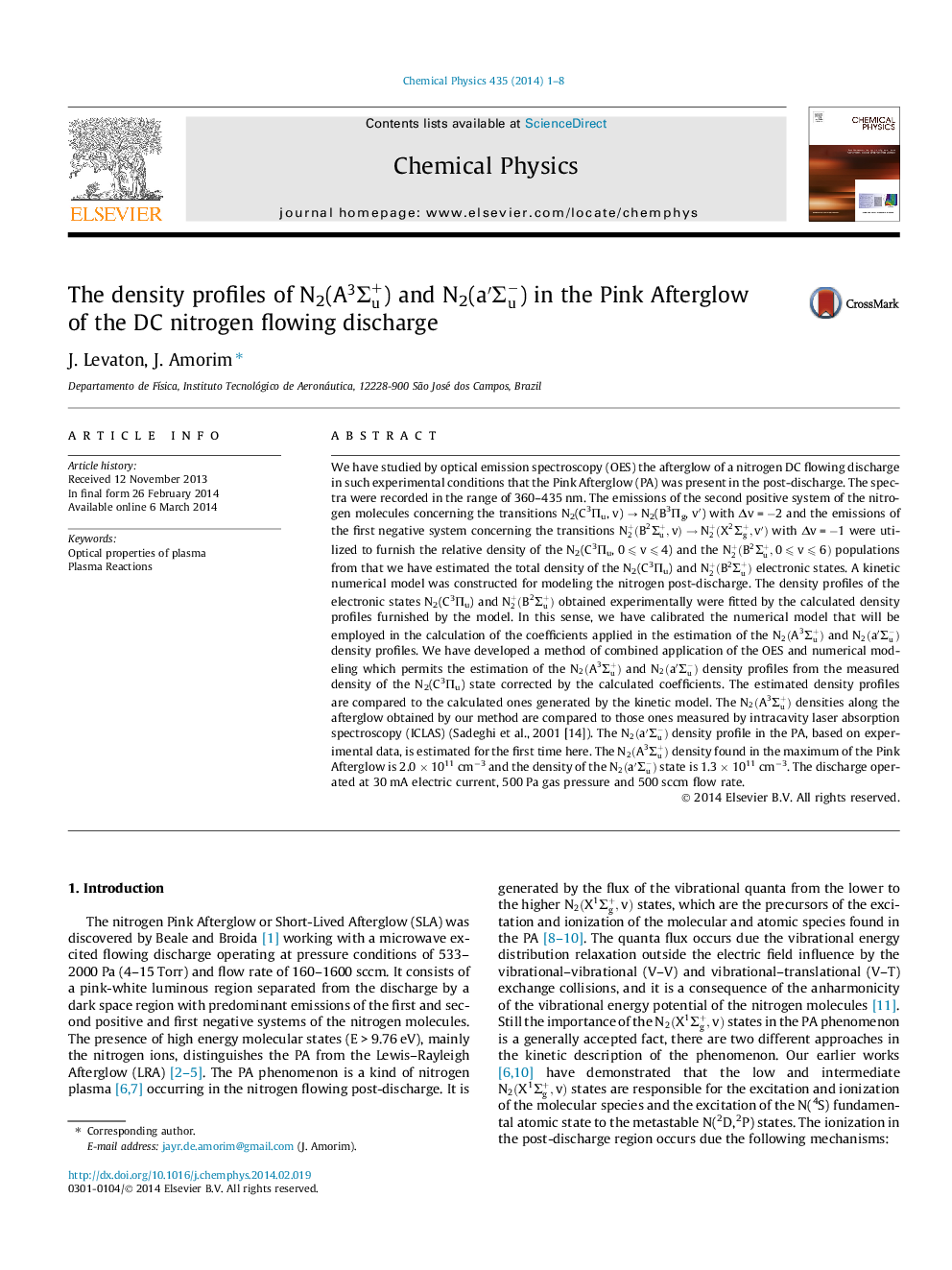| Article ID | Journal | Published Year | Pages | File Type |
|---|---|---|---|---|
| 5373647 | Chemical Physics | 2014 | 8 Pages |
â¢The N2 flowing post-discharge is studied by optical emission spectroscopy.â¢The N2(C) and N2+(B) relative densities were measured along the post-discharge.â¢A kinetic numerical model fits the N2(C) and N2+(B) densities in the afterglow.â¢The model calculates a coefficient used to obtain the N2(A) and N2(aâ²) densities.â¢Coefficient and the measured N2(C) density provide the N2(A) and N2(aâ²) densities.
We have studied by optical emission spectroscopy (OES) the afterglow of a nitrogen DC flowing discharge in such experimental conditions that the Pink Afterglow (PA) was present in the post-discharge. The spectra were recorded in the range of 360-435 nm. The emissions of the second positive system of the nitrogen molecules concerning the transitions N2(C3Î u, v) â N2(B3Î g, vâ²) with Îv = â2 and the emissions of the first negative system concerning the transitions N2+(B2Σu+,v)âN2+(X2Σg+,vâ²) with Îv = â1 were utilized to furnish the relative density of the N2(C3Î u, 0 ⩽ v ⩽ 4) and the N2+(B2Σu+,0⩽v⩽6) populations from that we have estimated the total density of the N2(C3Î u) and N2+(B2Σu+) electronic states. A kinetic numerical model was constructed for modeling the nitrogen post-discharge. The density profiles of the electronic states N2(C3Î u) and N2+(B2Σu+) obtained experimentally were fitted by the calculated density profiles furnished by the model. In this sense, we have calibrated the numerical model that will be employed in the calculation of the coefficients applied in the estimation of the N2(A3Σu+) and N2(aâ²Î£u-) density profiles. We have developed a method of combined application of the OES and numerical modeling which permits the estimation of the N2(A3Σu+) and N2(aâ²Î£u-) density profiles from the measured density of the N2(C3Î u) state corrected by the calculated coefficients. The estimated density profiles are compared to the calculated ones generated by the kinetic model. The N2(A3Σu+) densities along the afterglow obtained by our method are compared to those ones measured by intracavity laser absorption spectroscopy (ICLAS) (Sadeghi et al., 2001 [14]). The N2(aâ²Î£u-) density profile in the PA, based on experimental data, is estimated for the first time here. The N2(A3Σu+) density found in the maximum of the Pink Afterglow is 2.0 Ã 1011 cmâ3 and the density of the N2(aâ²Î£u-) state is 1.3 Ã 1011 cmâ3. The discharge operated at 30 mA electric current, 500 Pa gas pressure and 500 sccm flow rate.
Graphical abstractDownload full-size image
